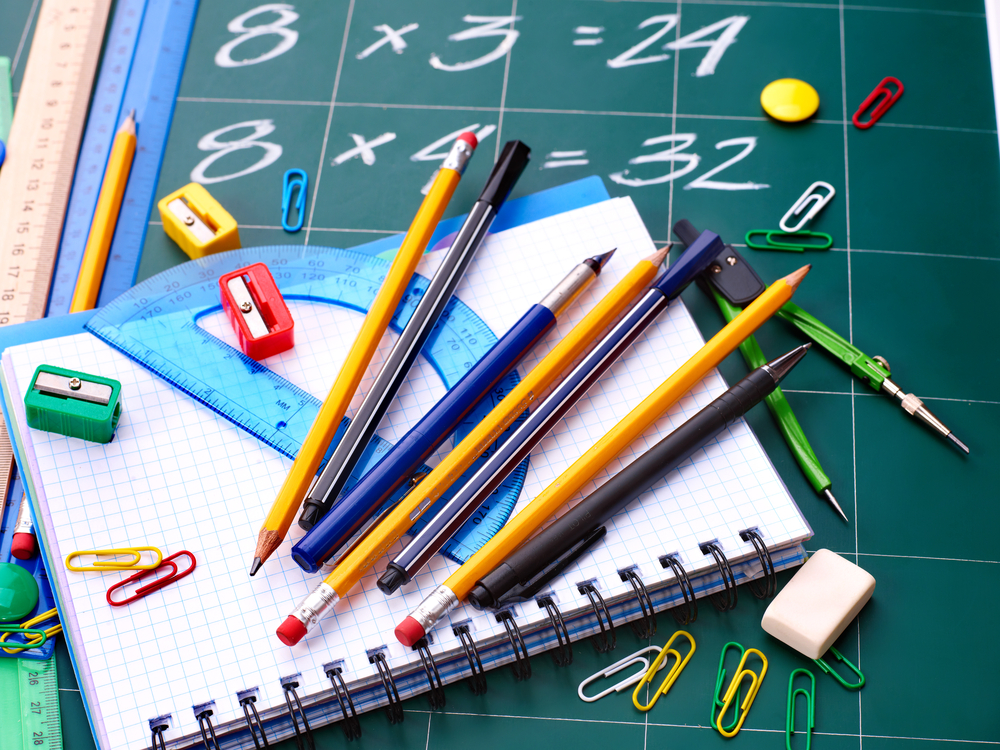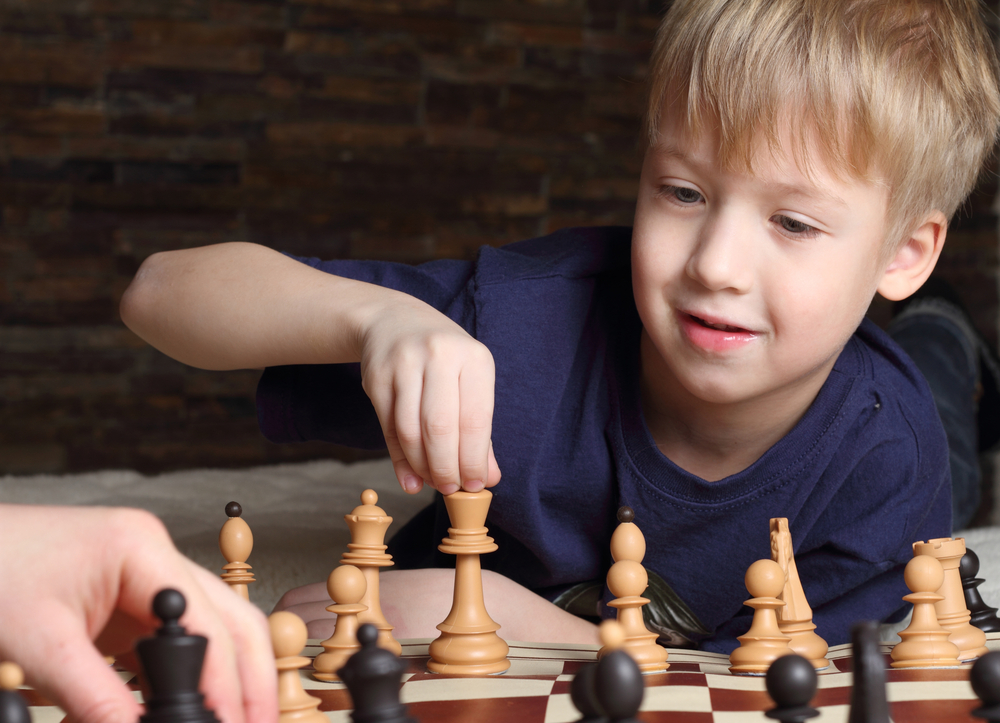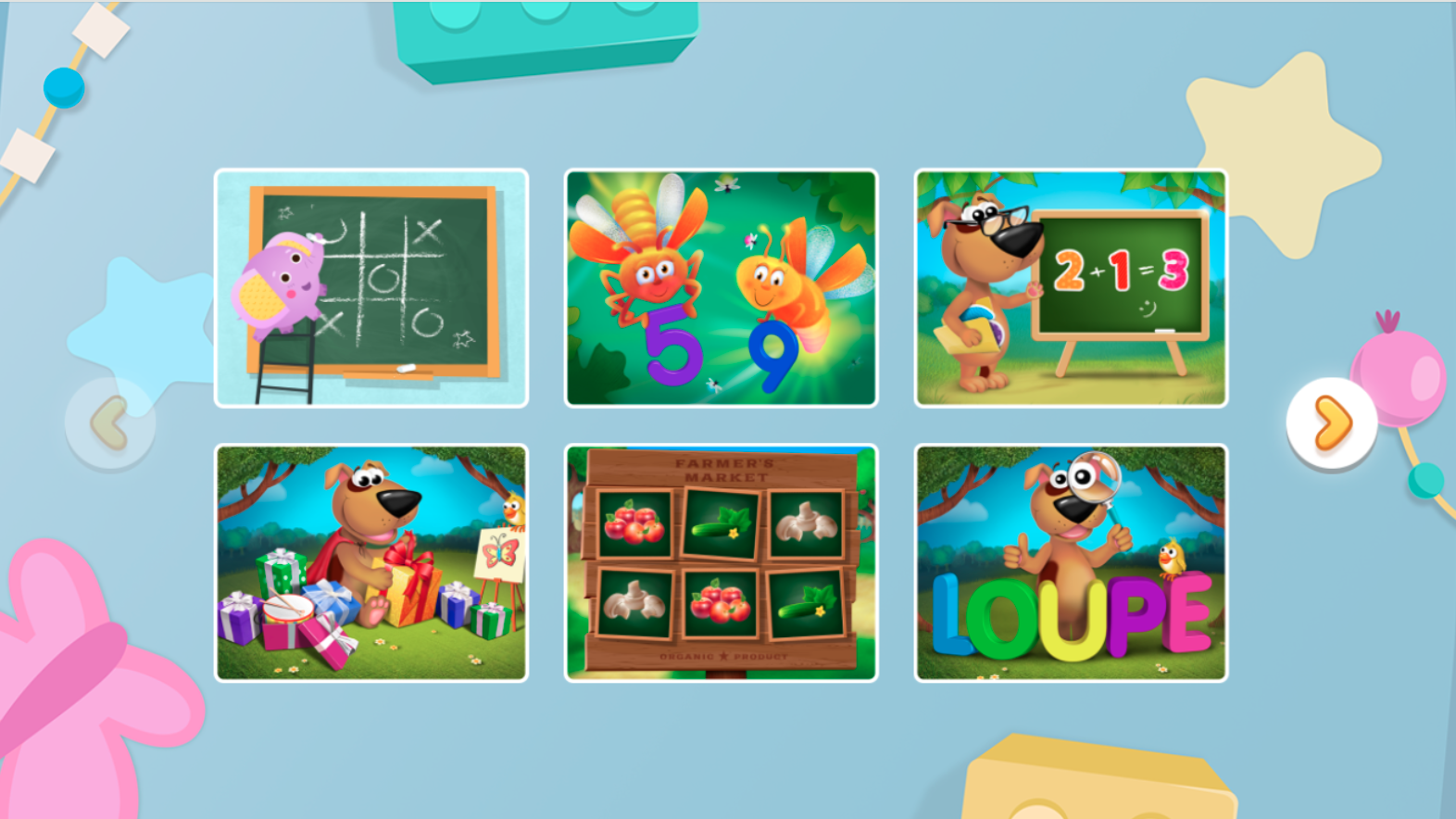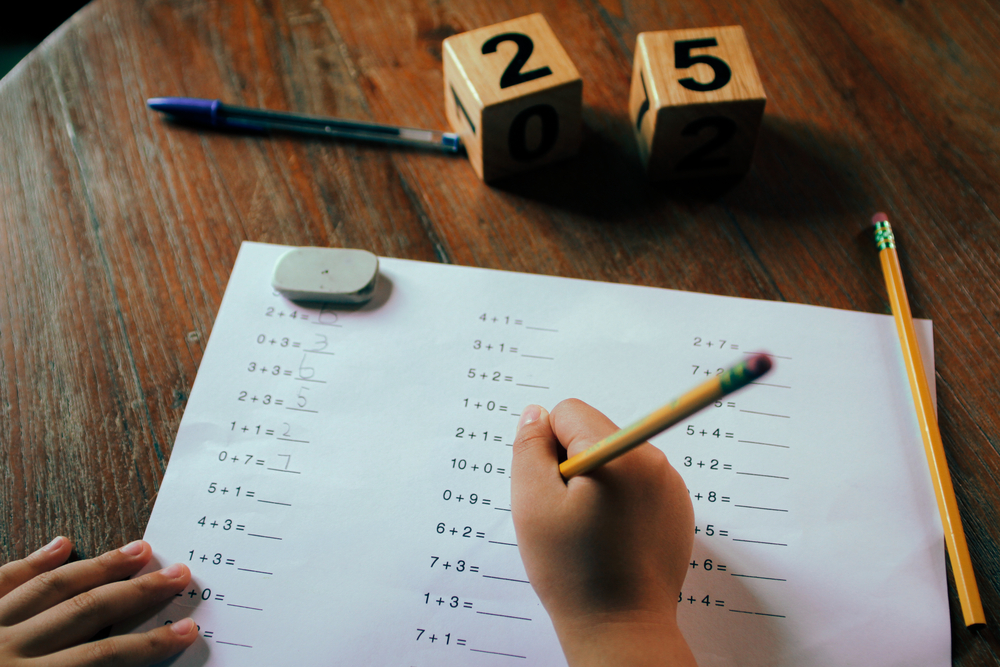Time recognition Math Worksheets for Ages 7-8
6 filtered results
-
From - To
Enhance your child's math skills with our Time Recognition Math Worksheets, designed specifically for ages 7-8! These engaging worksheets will help young learners master the concept of time through fun and interactive activities. From reading analog and digital clocks to understanding time intervals, our resources are tailored to promote essential skills. Each worksheet is crafted to cater to different learning styles, ensuring an enjoyable experience while building confidence. Perfect for both classroom and home use, these worksheets provide a solid foundation in time recognition. Bring the fun back to learning time and watch your child's math abilities flourish with every page!
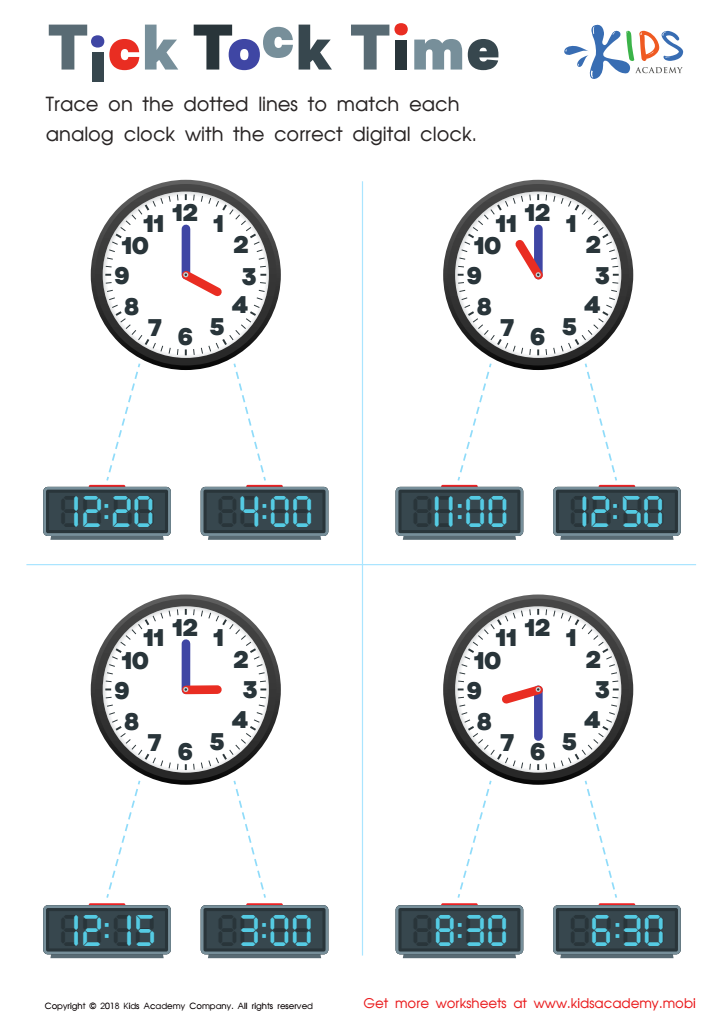

Tick Tock Time Worksheet
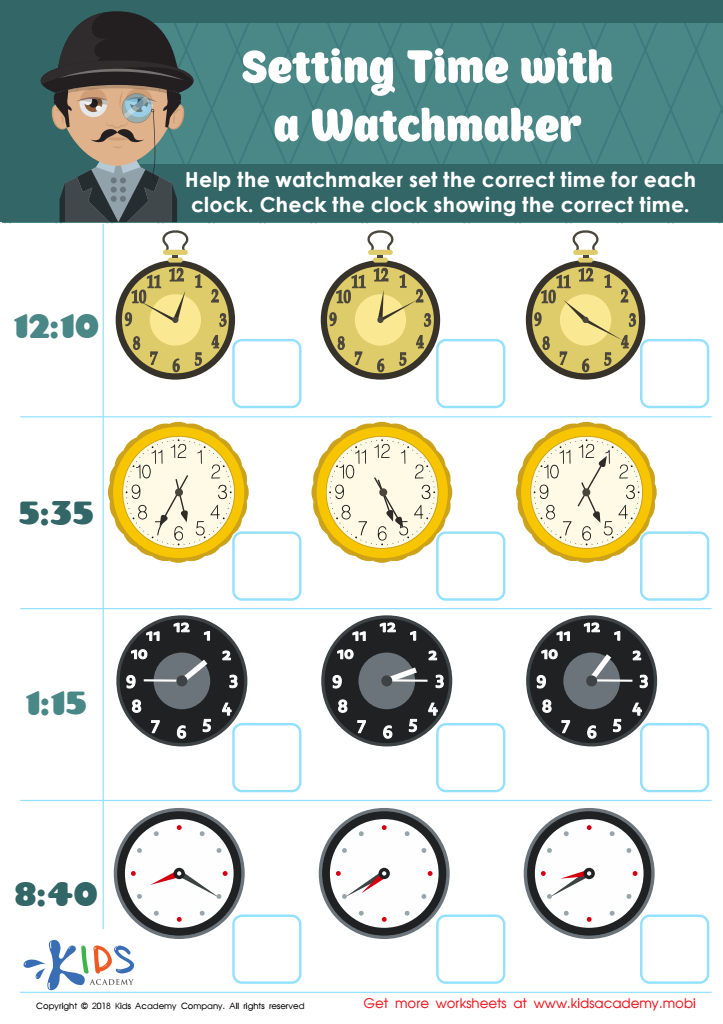

Setting Time with Watchmaker Worksheet


Telling Time by the Half Hour Worksheet


Matching Time Worksheet
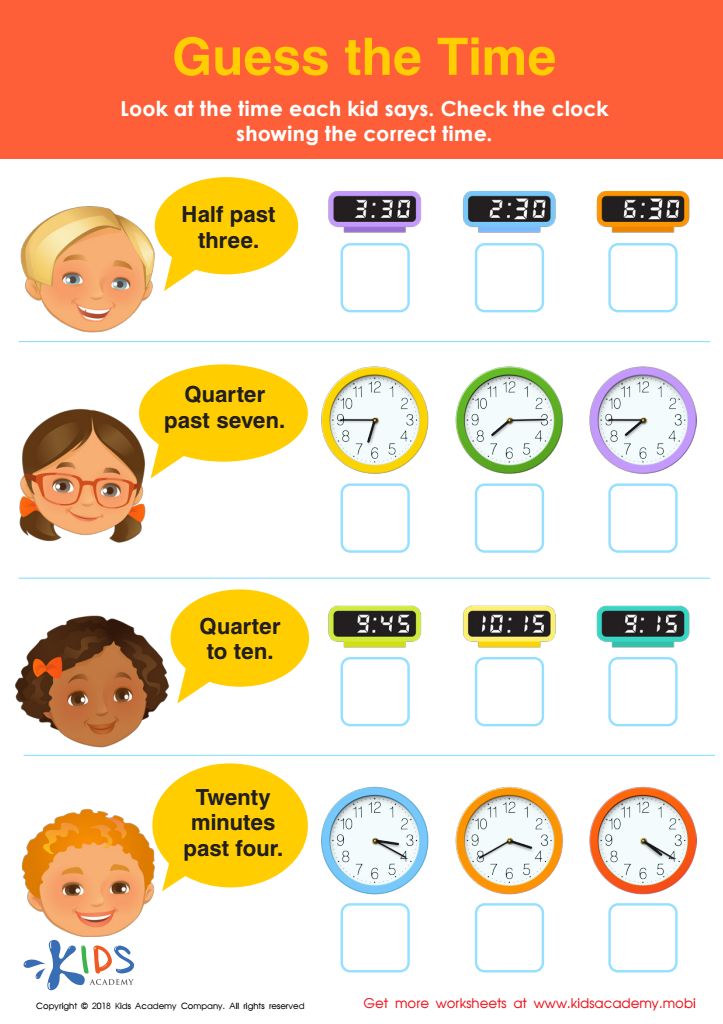

Guess the Time Worksheet


Time to Catch the Train Part 2 Worksheet
Time recognition is a crucial skill for children aged 7-8, forming a foundational aspect of their mathematical and everyday learning. Parents and teachers should prioritize this skill for several reasons.
First, understanding time helps children develop important self-management skills. As they learn to tell time, they become more aware of schedules, promoting independence and responsibility in managing their daily activities. This competence fosters critical life skills such as punctuality and time management, essential for academic success and future endeavors.
Second, time recognition enhances other areas of mathematics. It involves addition and subtraction when calculating elapsed time, strengthening students' overall numeracy skills. By mastering clocks and calendars, children also engage in problem-solving and logical reasoning, which are integral components of mathematics.
Moreover, recognizing time encourages cognitive development. Children learn to make connections between abstract concepts and their practical use in the real world, reinforcing their understanding of mathematics as a beneficial tool.
Ultimately, investing time and effort into teaching time recognition not only equips children with essential skills but also nurtures their confidence and autonomy—traits that will serve them well beyond the classroom. Therefore, teachers and parents should collaboratively embed time-related activities and discussions in everyday learning contexts.
 Assign to My Students
Assign to My Students





